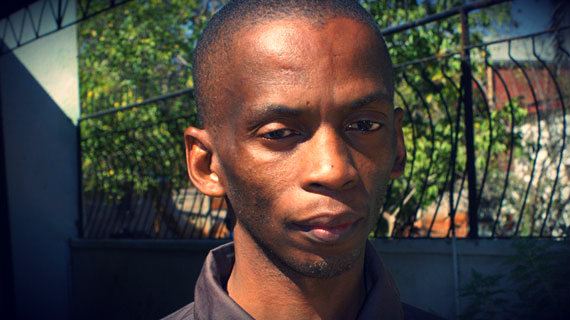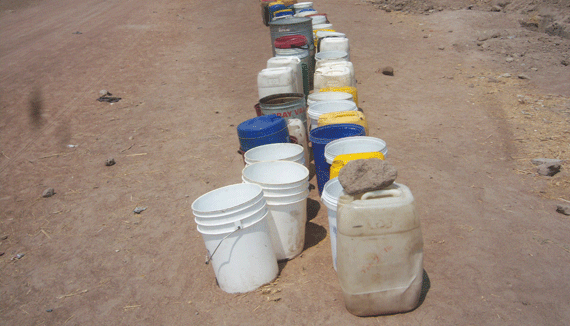
THE election results have sent cold shivers down the spines of hundreds of thousands of Zimbabweans as they bring bitter memories of food shortages, inflation and shortages of almost every imaginable basic commodity .
DUMISANI NKOMO
There is still hope if President Robert Mugabe decides to pursue a moderate and conciliatory political and economic agenda in order to salvage his legacy.
For the MDC formations, serious introspection and soul-searching is required if they are to be relevant in the next elections.
I would like to suggest that while there is no doubt that vote-rigging played a massive role in the Zanu PF victory, the two MDC parties and Zapu clearly lacked a bankable, viable, workable and implementable election strategy to win the elections.
It defies logic why the two MDC formations and in particular the MDC-T, failed to see the writing on the wall in terms of four critical factors:
The relative stability which changed the economic context of the elections as compared to the 2008 elections which propelled the protest vote because of record-breaking inflation and shortage of every single imaginable basic commodity
The marginal and in some cases, significant increase in support for Zanu PF positions in the constitutional outreach process
- Chamisa under fire over US$120K donation
- Mavhunga puts DeMbare into Chibuku quarterfinals
- Pension funds bet on Cabora Bassa oilfields
- Councils defy govt fire tender directive
Keep Reading
The Freedom House report which showed decline in support for MDC-T and Morgan Tsvangirai
Empirical evidence from civil society, in particular, reports by the Research and Advocacy Unit unearthing massive irregularities in the voters’ roll
The shift in electoral strategy by Zanu PF from coercion to persuasion through vote-buying, projects and bread-and-butter politics
The impact of Zanu PF’s indigenisation and empowerment carrot on the electorate
The manifest evidence of a flawed voter registration process which was concentrated in Zanu PF strongholds.
In spite of overwhelming evidence of the above, the MDC formations failed to formulate and execute viable election strategies to counter Zanu PF’s new strategies which must have been crafted with the assistance of State intelligence apparatus, consultancy companies and a team of strategists.
Other factors which contributed to the demise of the MDCs are the following:
Trapping of the inclusive government.
While Zanu PF used the four inclusive government years to regroup and restrategise, the two MDC formations did not. In terms of strategy, it is never wise to put one’s eggs in one basket.
While Simon Khaya Moyo (national chairman), Didymus Mutasa (administration) and Rugare Gumbo (spokesperson) were all deployed outside the inclusive government, MDC-T deployed the entire top six in government.
The party president held the position of Prime Minister, Thokozani Khupe was the Deputy Prime Minister, Tendai Biti (the secretary-general)was the Finance minister, national chairman Lovemore Moyo was the Speaker of Parliament, organising secretary Nelson Chamisa was Information Communication Technology minister, spokesperson Douglas Mwonzora was the chairperson of Copac.
Welshman Ncube’s MDC had Ncube in Cabinet, secretary-general Priscilla Misihairabwi-Mushonga in Cabinet and deputy secretary-general Moses Mzila-Ndlovu was a minister.
MDC ministers from both formations did amazingly well in Cabinet, but in the meantime they were losing ground to Zanu PF in terms of the day-to-day sustenance of the parties.
Even the ANC kept Gwede Mantashe outside the government so as to build robust and effective party structures .
During those four years, Zanu PF rebuilt from scratch using resources as a tool of mobilising voter support.
It is, however, still incomprehensible that Mugabe received a million more voters than he received in the March 2008 elections while Morgan Tsvangirai’s support base shrunk marginally and his demise empirically was more to do with the million “new” votes for Zanu PF.
Obviously the rigging machinery worked day and night for years while the MDCs were either sleeping strategy wise, or deploying their energy in solving the country’s problems.
By the time they woke up, Zanu PF had stolen both the electorate and the elections.
The MDCs woke up to the reality of a voters’ roll with ghost voters, ghost polling stations and the possibility of manipulated votes through a well-crafted strategy.
Instead of standing their ground, they participated in an election in which the result was predetermined.
Mugabe had already invited and accredited Sadc and African Union observers who obviously did not see or hear anything because this time around Zanu PF did not use violence, but smart “structural violence” around manipulation of the voters’ roll, voter registration and so forth.
I am shocked and perturbed that my dear mother who died over 10 years ago is still on the voters’ roll.
A forensic audit of the voters’ roll and the voting process may need to be carried out. In the meantime, the MDCs have five years to regroup, restrategise, rebrand and reposition themselves.
They need to be unemotional and objective in their reflections so that they formulate a winning 2018 strategy.
They should even ask themselves whether Morgan Tsvangirai has played his part in the struggle and whether or not they need a new face to lead them.
The MDC needs to do the same. Both parties suffered from complacency, overconfidence, arrogance and naïvety.










